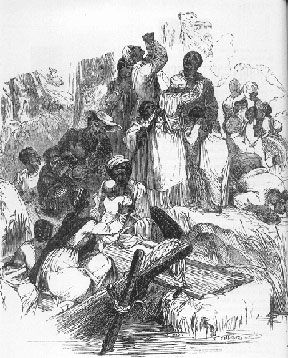

They helped between 30,000 to 40,000 enslaved African Americans come to Canada. It was a secret network of people called abolitionists (a person who wanted to end slavery). But I was free, and they should be free.(Image courtesy of The Buxton National Historic Site & Museum) What was the Underground Railroad?įirst, it's important to understand that The Underground Railroad wasn't an actual railroad. She said, “I was a stranger in a strange land and my home, after all, was down in Maryland, because my father, my mother, my brothers, and sisters, and friends were there. Despite the separations imposed by slavery, Tubman came from a close family in a tight community and she missed them. She was proud of her accomplishments and in 1896 spoke at a women’s suffrage convention, “I was the conductor of the Underground Railroad for eight years, and I can say what most conductors can't say - I never ran my train off the track and I never lost a passenger.”įreedom was bittersweet for Harriet Tubman. Abolitionist William Lloyd Garrison called her “Moses” for her work leading people from slavery. Over about a decade and in about thirteen separate trips, Tubman led approximately 70 people to freedom and provided instructions to 50-60 others to help them escape. Freedom was always tenuous and the threat of imprisonment made them leave Maryland. Ross had been manumitted, or freed, by this owner’s will in 1840 and he had purchased his wife, Harriet “Rit” Green’s freedom in 1855. Tubman rescued her elderly parents in summer 1857 when her father, Ben Ross, was warned that he would be arrested for suspicion of sheltering the Dover Eight, a group of eight freedom seekers from her home county in Maryland.
#People escape the underground railroad how to
The decision to self-emancipate was a difficult one with complicated considerations about family ties, children, how to make a living, and how to navigate the unknown.
#People escape the underground railroad free
Tubman’s husband, John Tubman, a free African man, had married again after Tubman first left Maryland and declined to go north when she came to get him. Tubman returned to Maryland’s Eastern Shore to rescue members of her family her brothers, Henry, Ben, Robert, and Moses, their wives, and several of her nieces and nephews and their children. The act required the reporting and arrest of anyone suspected of being a runaway slave, eliminated protections for suspected runaways, and provided economic incentives to kidnap people of African descent.

Abolitionist Thomas Garrett said of her, "I never met with any person of any color who had more confidence in the voice of God, as spoken direct to her soul.”ĭespite additional dangers resulting from the Fugitive Slave Act of 1850, Tubman risked her life and ventured back to the community where she was born to rescue family, friends, and others. Her bravery may be attributed to these skills, but most of all, Tubman had a lifelong, fierce, and unwavering faith in God. Her father and others taught her skills about the natural world and she developed savvy that helped her navigate across landscapes and through life. Tubman came from a strong community with regular connections to other places through the travelers and workers who passed through on its roads and waterways. There was such a glory over everything the sun came like gold through the trees, and over the fields, and I felt like I was in Heaven.” Tubman’s biographer, Sarah Bradford, quoted Tubman recalling, “When I found I had crossed that line, I looked at my hands to see if I was the same person. A short time later, Tubman escaped alone and made her way through Maryland, Delaware, and across the line into Pennsylvania and freedom. The family had been broken before three of Tubman’s older sisters, Mariah Ritty, Linah, and Soph, were sold to the Deep South and lost forever to the family and to history.ĭetermining their own fate, Tubman and her brothers escaped, but turned back when her brothers, one of them a brand-new father, had second thoughts. Financial difficulties of slave owners frequently precipitated sale of slaves and other property. In 1849 Harriet Tubman learned that she and her brothers Ben and Henry were to be sold.

Schomburg Center for Research in Black Culture, Photographs and Prints Division, The New York Public Library. Left to right: Harriet Tubman Gertie Davis Nelson Davis Lee Cheney “Pop” Alexander Walter Green Sarah Parker and Dora Stewart.


 0 kommentar(er)
0 kommentar(er)
